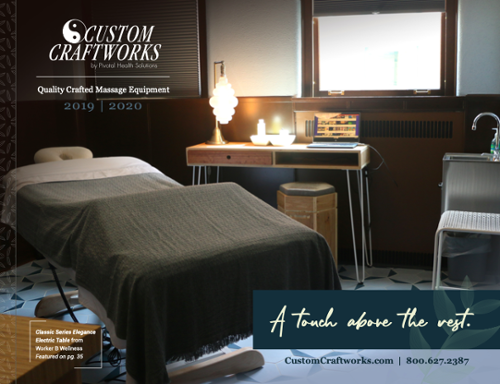
Fascial Stretch Therapy (FST) is an innovative stretch therapy that is an effective way to care for your body and help it perform at its best. FST can increase flexibility, reduce aches and pains, and improve range of motion. FST targets not only muscles, but fascia (the connective tissue that surrounds muscles, bones, and joints) as well, and supports every aspect of movement.
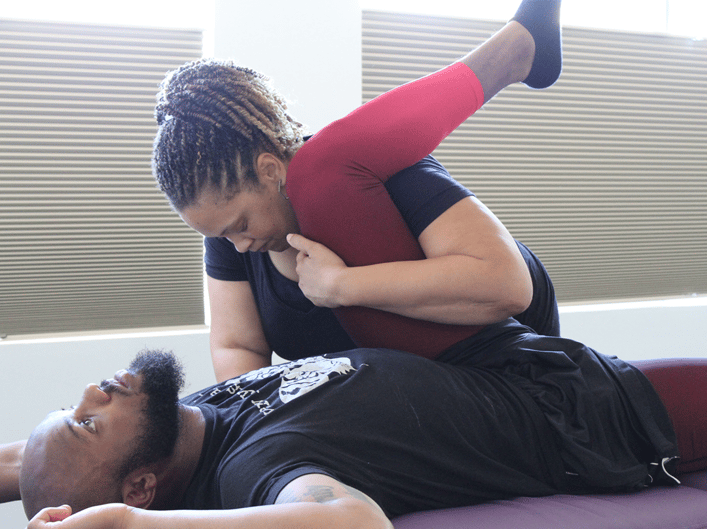 Photo courtesy of Refresh Therapeutic Massage & Bodywork |
Fascial Stretch Therapy: Q & A
Chamara Pittman | Certified Massage Therapist
Refresh Therapeutic Massage & Bodywork
Q: How is Fascial Stretch Therapy performed?
A: FST is typically performed on a table and takes a client through a series of assisted stretches. It stretches from the joint out through the fascial lines to address joint decompression, which helps with having greater movement.
Q: How does Fascial Stretch Therapy target both muscles and fascia?
A: FST movements are based on how our bodies move through various planes. For example, when I am working on a pitcher, he doesn’t just pitch from his arm – several muscles and fascial lines across the body work together to create a strike out pitch. When we do stretches, we target those movement patterns – in this case the swing of the leg and the arm and we can sometimes engage them all together.
Q: Do you need any special equipment or accessories?
A: Typically therapists use straps as a way to stabilize the body without having to use both hands or ask the client to stabilize themselves. I include stretch into my massage sessions, and so I often use these stretches without the straps with minor adjustments.
| Classic Series Athena Portable Massage Table Download Data Sheet |
Classic Feldenkrais Technique Table Download Data Sheet |
|
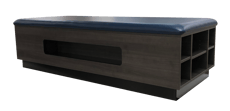
|
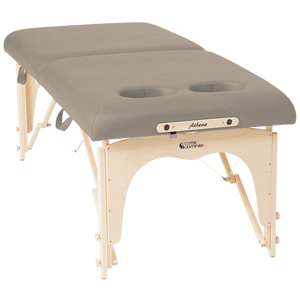
|
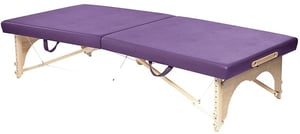
|
Q: How is FST different from Yoga or Pilates?
A: FST is great for improving flexibility, range of motion and injury prevention. So in essence, it is a great complement to any other physical activity people take on. What Yoga can do for the body is lengthen muscles through holding poses. There are no poses in Fascial Stretch Therapy. Pilates on the other hand, aims to strengthen muscles through low-impact exercises.
Q: Is FST treatment painful, and does it have residual muscle soreness?
A: The beauty of FST is that it is gentle, smooth and almost rhythmic in its movements. I’ve done it on everyone from professional baseball players to 80 year old women recovering from injuries. I have a short talk I give to clients in my private practice about not being heroes. When we reach resistance or if it starts to hurt, let me know. Many clients are used to old school stretching where they have been pushed painfully beyond their limits. Many clients also know this technique was developed for NFL players, so they assume they could not possibly endure it. They are surprised to find themselves drifting off to sleep when they actually experience how relaxing it is.
Q: How is Fascial Stretch Therapy different from static or dynamic stretching?
A: FST uses gentle, rhythmic movements from the core out to achieve the stretches. Static stretching is typically what you will see in the gym or at a park where people are holding a stretches for 10 seconds or more. Dynamic stretching is what you may often see prior to sports events and uses movements with the stretching.
Q: What is involved in the FST Certification process for therapists?
A: FST goes up to level 3. I am currently a level 2 therapist, and COVID-19 has prevented me from completing the final stage. The first level is simply the basic movements and principles of the theory behind FST. After racking up a certain number of hours of practice, you move on to Level 2 which gets into the creativity and finesse of the technique. I am excited to eventually take the medical track. It’s all done in Arizona at the Stretch To Win Institute with classes taught by Ann and Chris Frederick. Ann developed the technique and she and Chris have written a few books, so it’s great to learn directly from them and be able to ask questions and get advice.
Q: Who benefits from Fascial Stretch Therapy?
A: ALMOST EVERYONE!!! I had a client that came in complaining about his hips hurting every morning and how it took him over an hour to get mobile. This client travels a lot for work and has small children so, being immobile was not a good option. In one session we opened up his hips and honestly, I haven’t seen him since. I mentioned earlier I have also used this technique on an 80-year-old woman. In just 30 minutes once a month in conjunction with her physical therapy, we got her back to being active. FST helps you use your body better by releasing tension and areas that are stuck.
Q: How often should clients seek Fascial Stretch Therapy for maintenance?
A: As with any other treatment I do, maintenance always depends on the individual client, their goals and their commitment to doing work in between. A client that is motivated to do fascial stretching on their own may not need to see me as much for maintenance. But as a general rule, if it’s feasible, I personally recommend bodywork at least once a month.
Chamara Pittman, CMT
Chamara Pittman, CMT is a nurturing and attentive massage and stretch therapist. Her fluid style, that she often combines with aromatherapy, provides for ultimate relaxation while she works on the client’s specific therapeutic needs. She combines various techniques from different bodywork modalities including FST(Fascial Stretch Therapy), Swedish, Deep Tissue, and Shiatsu to achieve results for her clients. Chamara is a level 2 Fascial Stretch Therapist (FST) and a former massage therapy instructor at National Holistic Institute. Her work has included a diversity of settings including currently running her own private practice, working with players from the Oakland Raiders, hospital patients, chiropractic offices and spas in the Napa Valley and San Francisco. Chamara’s bodywork will leave you relaxed, refreshed and ready for whatever comes next in your life.


